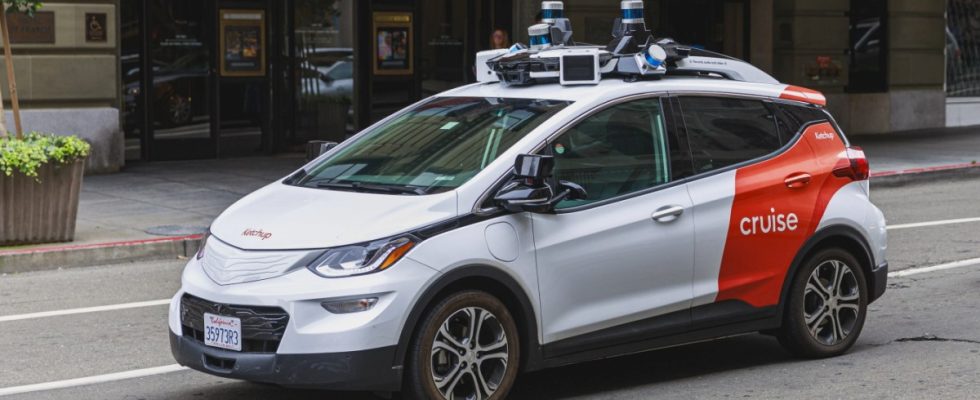The accident report makes you shudder. Two vehicles are parked next to each other at a red light. The light turns green and both cars start moving. On the other side of the intersection, a pedestrian is crossing the street; she apparently started running at a red light. The dark Nissan in the left lane hits the woman, she falls and gets under the car driving on the right. The vehicle brakes sharply, stops – but starts moving again, dragging the pedestrian about six meters with it.
What happened in San Francisco on October 2nd at 9:29 p.m. is no ordinary traffic accident. Because no one was behind the wheel of the right vehicle. A robotaxi ran over the woman. It was the first accident involving a Cruise self-driving car in which a person was seriously injured – and the last for the time being, at least in San Francisco. The California DMV has banned the General Motors subsidiaryto send driverless taxis around the city. From now on there must be a person behind the wheel again who can intervene if necessary.
The decision slows the robotaxi revolution that Cruise and Waymo wanted to launch from San Francisco. Since mid-August, both companies have been able to offer a paid taxi service around the clock with their robotaxis. The California regulator’s permission sparked violent protests in San Francisco. Politicians, police and fire departments expressed safety concerns. Municipal transport companies, many residents and, of course, taxi drivers also fought back.
Robotaxis became an enemy
It only took a few days for the skeptics to feel vindicated. Cruise cars blocked roads, got stuck in fresh concrete, missed crosswalks and collided with emergency vehicles. The red and white vehicles with two distinctive cameras on the roof became an enemy image. For decades, tech companies from Silicon Valley have been preaching that almost all problems can be solved with technology. Many people see this as hubris, and now there was a symbol on which their anger could be vented. Anyone driving around San Francisco in recent months has heard a lot of curses and honking when drivers are convinced that the robotaxis are taking too long to turn.
Cruise himself feels misunderstood. The company says, Individual cases were exaggerated. Human drivers caused many more accidents than autonomous cars. In the current accident, the representations also vary widely. The DMV traffic authority accuses Cruise of withholding some of the footage that the robotaxis’ cameras had filmed. The video stopped at the moment the cruise car collided with the woman and stopped. It was not apparent that it would then drive off again and possibly injure the woman even worse.
Waymo keeps going
The company claims, the authorities were shown the entire recording from the start and played it several times. The robotaxi drove a few meters further to clear the road and prevent a possible subsequent accident. This evasive maneuver is required for self-driving cars in California. In any case, it is not the robotaxi that is to blame, but the human driver who caused the accident. He fled after hitting the pedestrian, but the investigation has so far been unsuccessful.
At least Cruise is right about the last statement. Many people are terrible drivers. They speed, get behind the wheel drunk, run red lights and miss cyclists when turning right – mistakes that robotaxis have not yet made. Cruise will bring these arguments into play when it appeals the DMV’s decision. In the meantime, Waymo will try not to replace Cruise as an enemy. The Google sister company’s robotaxis have been driving passengers around the city for months, largely without accidents or scandals.

